is that it trades fun against a faithful replica of the iron on the ground. Now, there is some satisfaction to be had in developing a hi-fidelity scheme. But if that ends up with a limited ops scheme, I find myself questioning the value. Is it worth expending that much real estate – which is a major investment in money and time – on an ops scheme that consists of a single pair of GPs trundling a dozen or so rattly rust boxes along a single length of stick rail, swapping them for other equally disreputable rust boxes and towing the whole lot back to the start point? OK, that is essentially what the real railroad does, so full marks for authenticity, but null points for fun and entertainment…
So what to do? How do you accommodate variety and authenticity? What’s missing from the Tempe scheme? It’s obvious really – it only supports on line traffic, so there are no opportunities for the cool things I enjoy watching when I’m in Arizona. No stack trains, Z trains, hotshots, junk trains, repo trains and all the other exotica. It certainly won’t justify running multiple lash-ups of tunnel motors and ’45s. Sure, I could run them because it’s my railroad and who’s to know… but, well, I would know. The balancing act that is the suspension of disbelief would be broken by the irrefutable knowledge that the Tempe Industrial Lead would never support all those cool things.
OK, so if I want to support industry switching, a little main line action, and remain sufficiently faithful to a real place to satisfy the inner proto-modeller , where should I look? The Phoenix Met area is a branch off the Sunset, so you’re looking at haulers or industry switching only. Big haulers, admittedly, but nothing very exciting heads this way. I briefly considered the yards west of Phoenix Met at Cosnino and Pipeola, but having visited them back in the summer I didn’t really get a great feeling about them.
Then I recalled somewhere that did support mainline trains, a decent hauler and heavy switching with resident switcher sets… In fact, it was somewhere I’d spent hours watching the action. It’s Casa Grande, specifically the western edge of town. Here’s where the daily CG hauler blocks cars for the local switchers to deal out to the industries in the CG railpark. South of the Sunset, there’s a busy Cemex plant and a long lead that crosses Highway 84 to serve a variety of industries. North of the main there’s the Frito Lay plant and another chemically sort of industry that takes tank cars in volume.
So we have a location which ticks all the ops boxes, but how to make a decent trackplan from it? I also need to avoid my usual attempts to shoehorn too much track into an area – I seem to have an aversion to empty space on a trackplan. This is one area where following the prototype really helps. Believe me, the SP wouldn’t lay a yard of rail if it could get away with it. A perusal of the UP 2002 Tucson Service Area Track Chart gives some encouragement. There is an interesting arrangement of spurs that can be modelled reasonably accurately. A compressed version of the two track yard is also do-able. These tracks allow the CG haulers to block and store cars clear of the mainline and the siding. (it’ll be interesting to see how double tracking affects this area when it reaches here sometime this year. It’s currently only a few miles west at Maricopa).
In the absence of a shed 60 feet long and twenty feet wide, I’ll have to live with the 90 degree bends the track makes at each corner. One of the challenges of trying to model the various industries and railparks in Arizona is that they’re invariably set at 90 degrees to the mainline, not parallel which would facilitate modelling on a shelf layout. In one of those dazzling moments of insight I occasionally have if I mull over something long enough, I realised that having the main turn through unavoidable 90 degree bends meant that the industry spurs, if also arranged at the correct 90 degrees, would then be running parallel to the main along the length of the shed.
Even better, at least one of the industry legs could be used to form a natural view-block to hide the through staging that would support the moving scenery, ie the stack trains, Z trains and long distance traffic that adds so much interest to the Sunset. The pike wouldn’t be restricted to serving on line industries anymore, even though most of the ops would focus on working the CG hauler and the local switch jobs.
Brilliant!
The plan should make all this clear. The main is blue, the Casa Grande siding orange, industry tracks red and the staging tracks yellow.

The Cemex plant just cries out to be built as a spare room sized domino. That would provide some fun while I wait for the mortgage payments to susbside and allow spends on a decent sized shed…

This is the view looking west over the tracks into the Cemex plant. Two track yard, siding and the Sunset main on the far right.
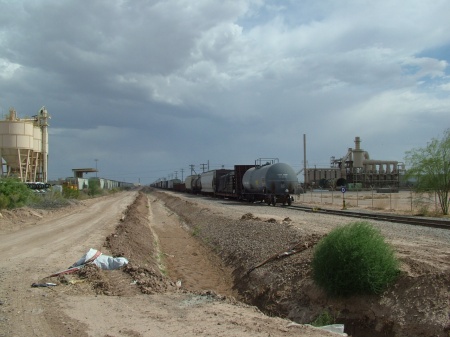
Here we’re looking away from the main from Cowtown Road. The Cemex plant is on the left, the track on the right heads south over hwy 84 and serves a great variety of industries judging by the staged cars…

A nice little cameo… a UP mobile maintenance guy is working on the SP GP40-2. Taken from Cowtown Road which parallels the small yard here, about 3 miles west of the Casa Grande depot. A nice switcher set too, GP38-2, SW1500 and a GP40-2. All available in quality HO models…

Here’s a sweet set of locos about to head back to Tucson with the return CG hauler. SD40-2,SD40, SD70M and SD40-2. The hauler runs everyday except Sundays…

The silos and covered unloading bay at the Cemex plant.

And finally, July 2008 hauler heading for Casa Grande. With a faux ’45 on the point, 2 SD60s trailing and 22 assorted tanks, boxcars, hoppers and flat cars in tow… awesome.


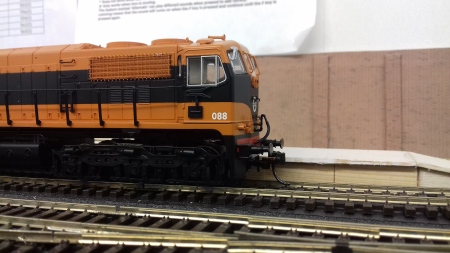
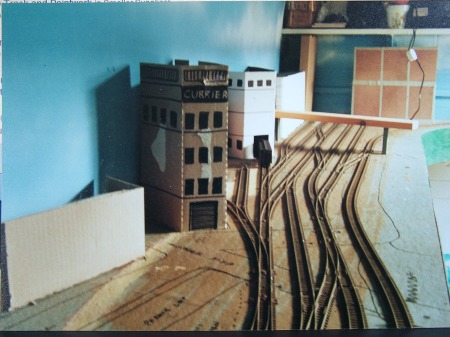
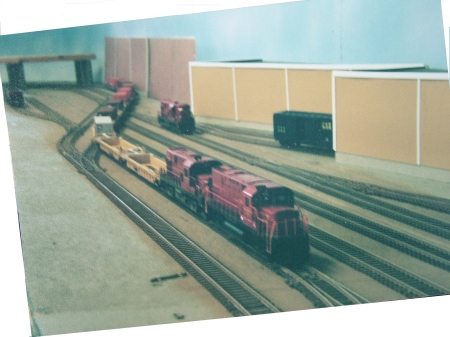
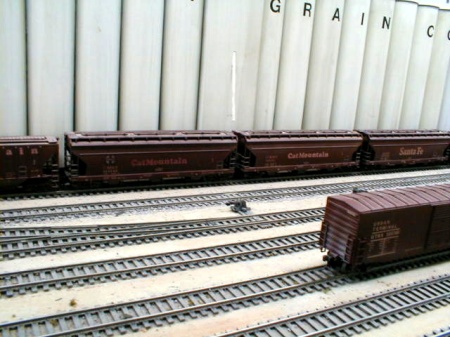
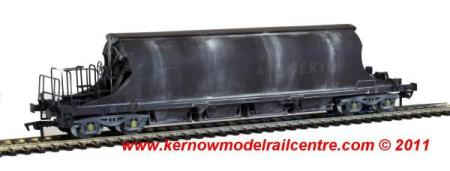


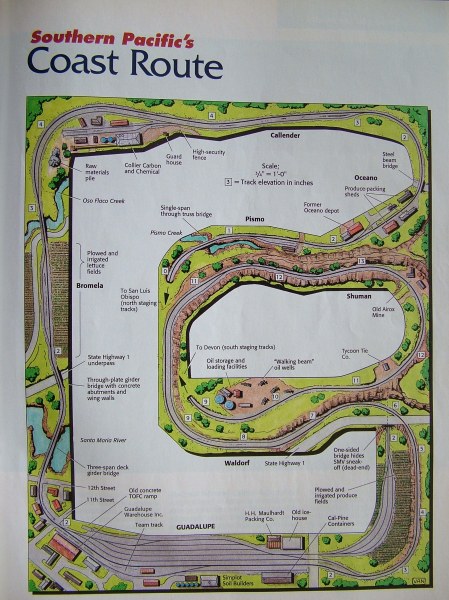


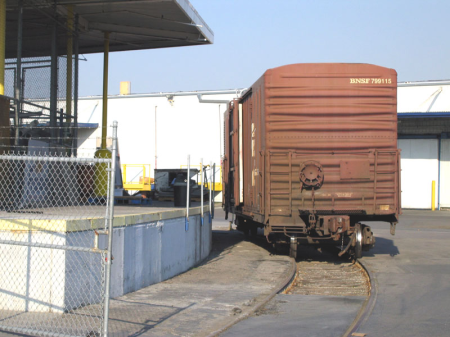










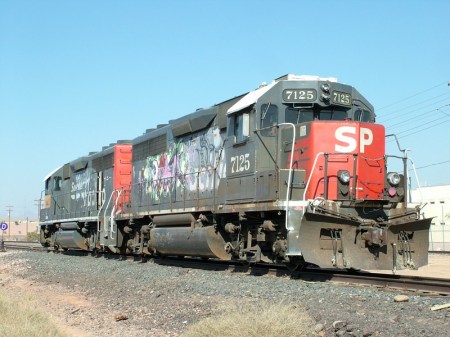
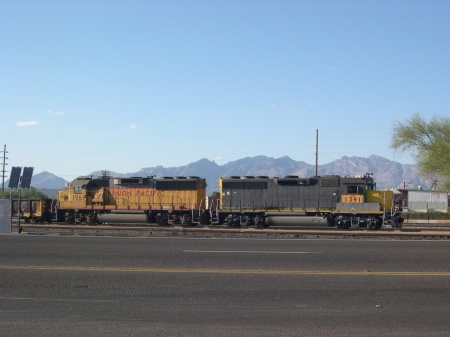






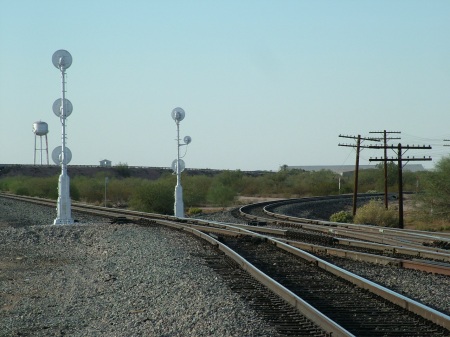



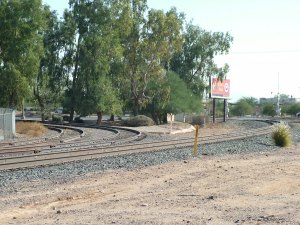

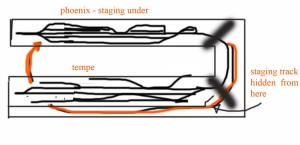
You must be logged in to post a comment.